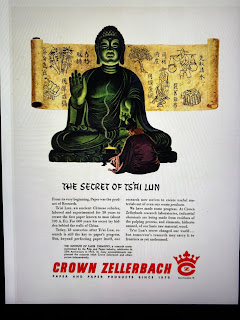We are fortunate to live in a time where very accurate railroad models are broadly available, whether in kit form or ready-to-run, in many scales and for many eras and railroads. This may be most true for HO scale, where some amazing models are being produced for us to enjoy.
While I enjoy building models and am working to further develop my modeling skills for adding accurate details, there are times where models that are fully assembled and ready-to-run, or nearly so, catch my eye and my wallet. An advantage of this is that my fleet of rolling stock has grown with some beautifully produced cars that can immediately be admired and eventually run on the layout.
These three Great Northern caboose models are meant to represent steel wide vision caboose designs from the 1960's and are an interesting example of the evolution of ready-to-run plastic models.
The model on the left above is a custom printed Athearn model that was once produced by Track One from the Athearn wide vision caboose. Track One has a Facebook page and may still be doing business, although the last post is from 2019. While the model itself is not highly accurate for GN (the model is closest to a Rock Island prototype), the printing is well done, including the signature GN safety slogan, but without the "radio equipped" lettering. The X-101 was a wide vision caboose built by International Car for the GN, so the general appearance is similar., although a third side window is lacking.
This model is what many would call a "stand in" due to some non-prototypical design features. I have added more appropriate trucks with metal wheelsets and Kadee 58 knuckle couplers. It really isn't bad for an Athearn blue box model with molded on details like the curved grab irons, but does lack GN specific details.
On the right is the Atlas version of a GN standard vision steel caboose. Note the difference in the width of the cupola. This model is closer to the actual cars that the GN ordered from Morrison International in 1963 and 1964, but still not exactly prototypically accurate. Unfortunately the silver roof color is incorrect. This car came with steel wheelsets and knuckle couplers. It is lacking the GN tool and battery boxes on the side, and the unique GN end gates, with minor differences in the side window arrangement, among a few other details. Again, beautifully painted and printed with crisp lettering and it has separately applied wire grab irons.
The recently released Walthers version of the Morrison International caboose is very nearly accurate for the GN right out of the box, with just a few specific details that could be added. The window arrangement is correct for the GN. Interestingly, as this is a Walthers Mainline model, it does not include any grab irons. They are available as an add on detailing kit, however, and there are molded drilling dimples on the car to help in placing them. I have not yet installed these as I just recently got this car. It does include the distinctive GN tool boxes and end gates. Unfortunately, Walthers quickly sold out of this car decorated for GN. I was able to find one available from a dealer online after finding that my pre-order through another dealer was not fulfilled by Walthers.











